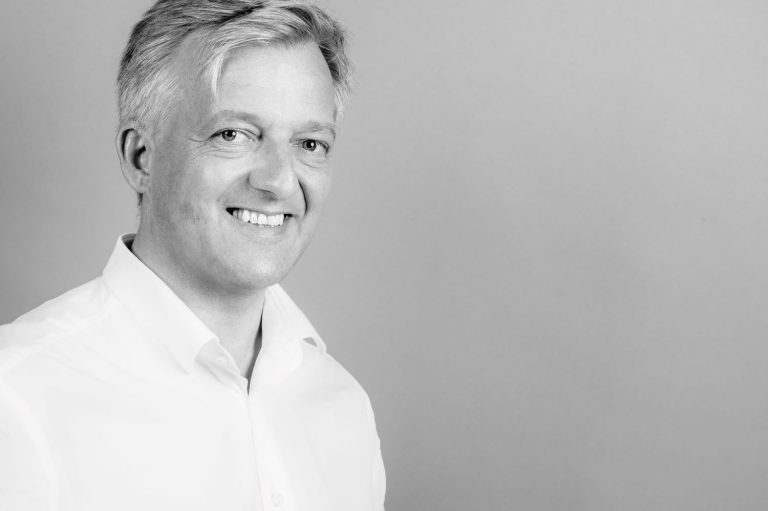
Interview by Diane Larner founder and editor of Bathroom Review & Kitchens Review.
Diane Larner launched both titles over 14 years ago and has been writing about the bathroom and kitchen interior design industry ever since, publishing regular features across the two sectors.
During a visit to Kaldewei HQ this month, Diane Larner caught up with Christian Buettner – Director of Innovation and Portfolio – to get the inside scoop on the design and production processes behind Kaldewei’s acclaimed steel enamel baths.
Q: What elements do you believe epitomise excellent design at Kaldewei?
A: Ultimately, design excellence is judged by its success; the customers choose. So, when people say let’s do an innovation, I believe you can only do your best; it will be awarded to you by its success. But I also think our products should have a unique quality, maybe some surprising elements that elevate the bathing experience. It is also essential to create a product that is a cohesive part of the building project; we want our products to work with various interior designs. Our design philosophy is based on our core values of sustainability and circularity. We try to make products that are long-lasting and aesthetically pleasing, but not too loud, not obnoxiously screaming ‘look at me’, because then that’s styling, and I shy away from that.
Good design has these inherent qualities: good ergonomics, flawless function, and the correct elements that make it fresh and new. These are what makes them icons in time.
Q: How does your design team integrate emerging trends into new products in such a rapidly evolving industry?
For us, it is about megatrends, long-standing trends that stand the test of time. We want to cultivate the bathroom experience, so it’s not just about the shower gel and the new scent but also the product’s aesthetics that help create the bathroom as a space for cleanliness and mindfulness. In this sense, ergonomics have surprising functionality. For example, the Sound Wave Bath lets users indulge in their own dreamy music, whale sounds, or whatever rocks your boat. You can play with light and temperatures. There are a lot of aspects that we like to bring to the wellness trend. We want to help people be themselves, and they do this by creating their own wellness and recreation area in the home.
Q: You’ve talked about the importance of sustainability for Kaldewei. What role does this climate change play in the design process, and how do you balance eco-friendly practices with innovation?
Firstly, we benefit from working with steel enamel, which is now a certified circular product. We are also part of the Madaster database, which ensures we refurbish and reuse. It is close to the circularity principle of cradle-to-cradle design and has been created to ensure zero waste. This means that in the future, if you redesign the building or tear it down, you will know exactly what products are in there, how much steel there is, how many lighting fixtures there are, etc.
Furthermore, since steel enamel is 100% recyclable, we also give money back if you recycle a steel bathtub. The concept is you borrow usage for a time and then bring it back. Kaldewei is also considering bringing the products back to refurbish them (we are not there yet), but it would mean you could keep your vintage bath and then, at some point in the future, ask for it in a different colour.
We also have the highest standards in terms of eco-friendliness and production. We are careful only to add products that are the most sustainable, and we have eight megawatts of solar panels, so Kaldewei is already in that space.
Q. Can you discuss upcoming projects that highlight Kaldewei’s commitment to sustainable design?
We always want to improve, but you must know what your suppliers are doing. That’s now on the map; it proves that we are not just doing marketing but actually doing it. We are committed to science-based targets; in this sense, we are an open book. However, it is not easy to comply with the process and deliver all the data; it involves an immense amount of work – and we are putting this work in.
Q: Can you tell us about the most challenging project you worked on recently and share the design obstacles?
OYO is the most challenging bath we have ever worked on. In many bathtubs, the outer shape is the inner shape, so with a steep side wall, there is nowhere for a neck rest, and that’s no good; it needs to be comfortable. Stefan Dietz and I developed the OYO shape together. The process took a year from start to finish, and it pushed us to the limits. Due to how steel enamel is created, we had to use the single largest sheet metal piece we could get, and we created two bathtubs, one inside the other. The result was the curve of the outer shape barely touches the floor, so the curve continues underneath the bathtub; there is tension between the baths. This was our most challenging process.

Pictured above OYO DUO
More news and product information from Kaldewei
About Kaldewei
Kaldewei is a leading manufacturer renowned for its premium steel enamel baths and shower solutions, blending innovative design with sustainable production practices. Founded in 1918 in Germany, the company has established a strong reputation for quality and durability, using a unique steel enamel formula that combines resilience with aesthetic appeal. Committed to sustainability, Kaldewei prioritises environmentally friendly manufacturing processes and recyclable materials, making its products luxurious and eco-conscious. With a focus on design excellence, Kaldewei continues to push the boundaries of bathroom aesthetics, catering to a diverse range of styles and preferences in the KBB market.

